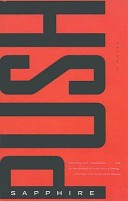The formidable Ishmael Reed (Mumbo Jumbo) argues, in “Fade to White,” that responses to Precious (trailer above) break down along racial lines, with white viewers applauding its candor, and black viewers infuriated by its offensive, ham-handed stereotypes.
This stratified response is no surprise, he says, because the film intentionally panders to white audiences: “In guilt-free bits of merchandise like ‘Precious,’ white characters are always portrayed as caring. There to help. Never shown as contributing to the oppression of African-Americans. Problems that members of the black underclass encounter are a result of their culture, their lack of personal responsibility.”
I haven’t seen the film, and probably won’t, but below Adalena Kavanagh, a New York City public school librarian, offers a thoughtful defense of Precious — or at least of Push, the novel that inspired it. She says that her students, who are mostly African-American and Latino, request it more than any other book.
 Ishmael Reed writes, “Among black men and women, there is widespread revulsion and anger over the Oscar-nominated film about an illiterate, obese black teenager who has two children by her father.’ While this may be Mr. Reed’s experience, his statement runs counter to my own experience with Push, by Sapphire, the book that the movie Precious is based on. I am a teacher and a librarian who has worked in the New York City public school system since 2003. There hasn’t been a more sought-after, talked-about, or frequently-read book among my students than Push. My students are, and have been, predominantly African-American and Latino. The students who demand Push have been predominantly African-American and Latino. These students live in Harlem, Washington Heights, the Bronx, Queens and Brooklyn.
Ishmael Reed writes, “Among black men and women, there is widespread revulsion and anger over the Oscar-nominated film about an illiterate, obese black teenager who has two children by her father.’ While this may be Mr. Reed’s experience, his statement runs counter to my own experience with Push, by Sapphire, the book that the movie Precious is based on. I am a teacher and a librarian who has worked in the New York City public school system since 2003. There hasn’t been a more sought-after, talked-about, or frequently-read book among my students than Push. My students are, and have been, predominantly African-American and Latino. The students who demand Push have been predominantly African-American and Latino. These students live in Harlem, Washington Heights, the Bronx, Queens and Brooklyn.
As a librarian, when students demand a book, I am inclined to give it to them. We struggle every day to make literacy important to our students, so when they find something that actually speaks to them we can’t ignore it, or wish it would go away, no matter how controversial it is, or how uncomfortable it makes us feel. To call Precious a stereotype is to believe that readers cannot distinguish between a character’s experience and a racial group’s reality, and that is giving readers and Sapphire very little credit.
I’ve read the book several times and I didn’t come away from it believing that Precious and her family represented all African-Americans. That would have been ridiculous, and I’m not inclined to believe that any one character can represent any one race. If a reader does think that Precious stereotypically represents most African-Americans, then that speaks more to that particular reader’s ignorance and inexperience than to Sapphire’s work.
My students are drawn to the book because it is set in a location that many of them are familiar with — Harlem — and because the book it’s written in colloquial language. They recommend the book to their friends because incest is a taboo subject, not because they relate to the incest in the book, or believe that incest runs rampant among the African-American community. And what if a few of them do relate to the book because of the incest? Isn’t it a good thing that there is a book that speaks to their experience? What many of them can identify with are Precious’ struggles with literacy and poverty. They stick with the story because Precious is not merely a stereotype, but a fully drawn character. They are interested in the small steps she takes to improve her life.
Precious may not be living the ideal life by the end of the book, but she certainly is better equipped to deal with everything that has happened to her than she was at the beginning of the novel, and this is because she’s become literate. Anyone who believes that Precious’ burgeoning literacy is a small accomplishment doesn’t understand how difficult it is to navigate the world when you can’t read.
As a teacher, I found Push a difficult book to read because it highlights the many ways we — white or black — fail our students. Push makes one question how a student reaches the 8th grade without knowing how to read. The book is not a nightmare that we can easily wake up from and shake off, because there really are girls living in poverty who get to the 8th grade without learning how to read. Nor is the book a fairy tale; Precious’ problems don’t all suddenly go away simply because she can read. Maybe that is why my students are drawn to the book. It doesn’t pander to them and doesn’t promise them that life will be perfect, but what it does do is show them that you don’t have to be defined by the bad things that happen to you.
Mr. Reed describes Precious as “an illiterate, obese black teenager who has two children by her father,” and at the beginning of the book that’s how she might describe herself, but by the end of the book she knows that she’s more complex than that.